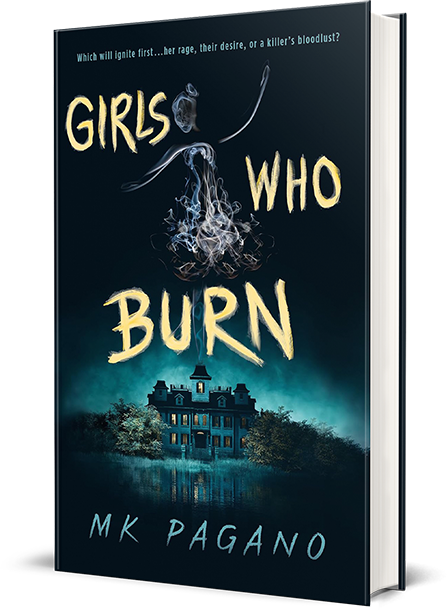How To Edit Your Novel (In Sixteen Steps)

The best way to learn how to do something properly is to do it wrong dozens of times until you figure it out … right?
If that is the case, then consider me to be the premiere expert on how to edit your novel.
I’ve told the story before of how I spent five years rewriting my first novel and how it’s still not done. With my second novel, I improved somewhat, but still engaged in far too much rewriting before letting someone else see it. With my third novel, I believe I have finally figured out the best way to approach the lengthly editing and rewriting process that comes after (not before!) completing a first draft, and so obviously I wanted to share.
Step One: Draft the First Draft. Meaning, finish the draft before trying to fix anything. And try as hard as you can not to edit much as you go. I am personally incapable of not editing at all as I go, but I am doing better with it. Why is it better not to? Because you want to gain distance from it so you can edit objectively.
Step Two: Take Break. Work on something else, preferably something very different. Gain objectivity.
Step Three: Draft the Second Draft. Try reading it through once and really looking at the big picture problems (flow, rising action, first and second turning points, climax) rather than refining every scene. You can obviously fix the problems you see, but don’t go too deep into the granular stuff in this draft, because chances are you’ll be cutting some scenes, and there’s no point in polishing something you’re going to cut.
Step Four: Send to Appropriate Critique Partners. In my experience, there are two kinds of critique partners: those who are good at line edits (telling you when you’re mixing up ‘your’ and you’re’, pointing out unrealistic bits of dialogue) and those who are good at “big picture” edits. At this stage, you want to be working with the “big picture” people.
These people are harder to find, because they tend to be more experienced and are probably already working with CPs, or they’re professionals who get paid to do stuff like this. (I imagine once you’re agented they’ll be easier to find, but I’m specifically talking to unagented writers here.) But these people are essential. They will point out the problems with story structure you missed, confused themes, whether you’re starting the story in the right place, whether you’re even telling the story in the right tense, from the right point of view. And you need to get your groundwork in the right place before you begin refining the details of your structure. This feedback is essential to have before you draft again. You wouldn’t start painting the walls of your house without making sure the foundation was sound first, would you?
Step Five: Take a Break. While your CPs have the manuscript, you don’t really have a choice, so go work on something else.
Step Six: Receive Feedback. Read your CPs’ feedback. Breathe. If they are any good, it will be extensive and can involve major revisions: cutting storylines, cutting characters, etc. Don’t immediately dive back in and start fixing stuff. Digest what they said. Ask questions. And again, breathe.
Step Seven: Organize Feedback. I find it helpful to make a list, starting with the big things (“eliminate this major character”), and going down into the small things (“rename this minor character”).
Step Eight: Re-Outline. You should already have an outline; I tend to loose-outline when drafting, but even if you’re a panster, you can create an outline when you’re done with the first draft of the novel, which may seem like a waste of time, but it’s not, I swear, because of this step. Now that you have an outline to work off, it should be easier to tweak it to fix your newly revised structure.
Step Nine: Draft the Third Draft. This may take more work than your second draft, as your dealing with objective input here, not just your own. Of course, it’s still your story, and you do not have to take anyone’s ideas that you don’t like. That’s why it’s good to have at least two critique partners: if only one person suggests something, it may be something you don’t need to change, but if three do, that’s a clearer sign something’s wrong. At any rate, use your outline, use your notes, work at your pace, and try and not re-edit anything to death at this stage; just rewrite it once, do a reread, fix anything else you see, and then…
Step Ten: Send it to Appropriate Critique Partners. This is the stage where you send it to CPs who deal more in line edits. I find these people much easier to find, as they don’t even need to be experienced writers; they should be people who read a lot and can spot mistakes and tonal shifts and other smaller mistakes your scenes may have. This is where a writing group can come in handy, where you meet every week or so and swap chapters, though that tends to take a while. But then people who are only getting the story in increments are naturally going to be better at spotting the small stuff.
Step Eleven: Compile Feedback. Take a look at everything, think about what you want to keep and what you don’t, and organize it. At this stage, I don’t feel you need a new outline as it will mostly be adjusting dialogue, replacing “encampment” with “embankment”, eliminating filler sentences, etc. But I find it does help to at least loosely note the things to fix.
Step Twelve: Draft the Fourth Draft. Go through your notes. Fix the problems. Go through them again. Fix even more. And then…
Step Thirteen: Send to Beta Readers. These people are the easiest to find as they don’t need to be other writers at all: they should just be readers. I have a select group of friends, as well as my husband-to-be, who fulfill this role for me. You want to wait to send them the latest draft because they aren’t necessarily going to point out the overarching flaws in your manuscript: they’re reading it for the pleasure of reading a story. These are the least critical people, and most of the time my feedback from them is, “This is great!” but then they’ll also point out small things they didn’t understand, or didn’t like, or did. Gauge their reactions, keep track of it all, and then…
Step Fourteen: Draft the Fifth Draft. Unless there was any major feedback from your beta readers, this should be a far less extensive revision than the others. It should actually be mainly a polish.
Step Fifteen: Take a Break. Another one?! Yes! You need objectivity before…
Step Sixteen: Draft (what is hopefully) The Final Draft. Polish, polish, polish. Your manuscript should by now be the best you can get it.
Then you will get into writing a query and if needed, a synopsis, compiling your list of agents to query, and all that fun stuff, but that’s the subject of another post.
So! That is my list. Is it long? Yes. Does it take a very long time? Yes. But I’ve found that in order to edit anything properly, I need one big thing: objectivity. And the only way to get that is 1) from other people and 2) from distancing myself from my work for a good amount of time.
How does this look to you? Would you add anything? Take anything away? I’d love to know…
Image found here


Um. Wow. This is just what I needed to read. I’m currently at what you listed as step three. I’m trying to edit my first completed draft ever and have been scratching my head and putting editing off further and further into the future because well… I have no idea what I’m doing. But this has certainly given me some insight as to how I can even begin to approach the process. Breaking it down into steps is so helpful. Looks like I’ve got a long way to go…but I did expect that. So thank you so much for sharing your experience with a complete novel-editing noob. I know not every process works the same for every writer, but crossing my fingers this one might just work for me! At the very least, it’s gotten me interested in trying to get started once again. 🙂
So glad I could help!
This was very motivating to read, as I’m currently staring down the barrel of a LOT of editing… thanks for putting this together! It’s nice to see a step-by-step list to make the whole process feel less intimidating.
So glad it helped!
[…] advice is for Step 7 in my Sixteen Steps to Revising. So once you’ve gotten your feedback from your critique partners and are ready to make the […]